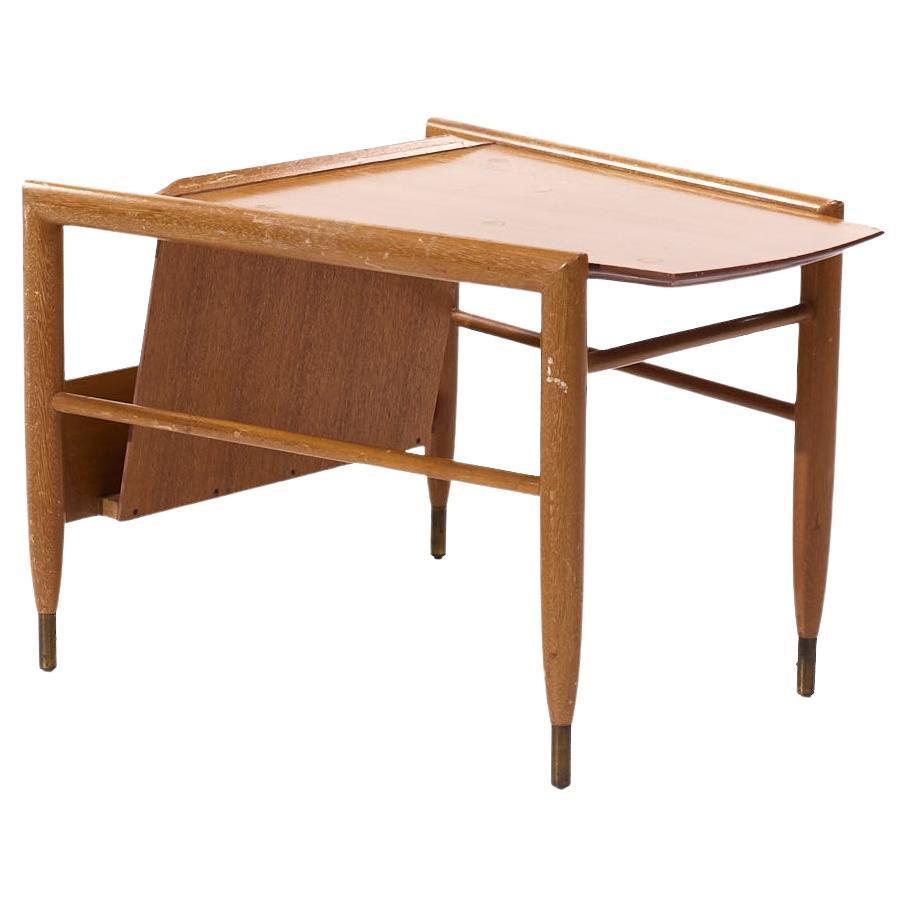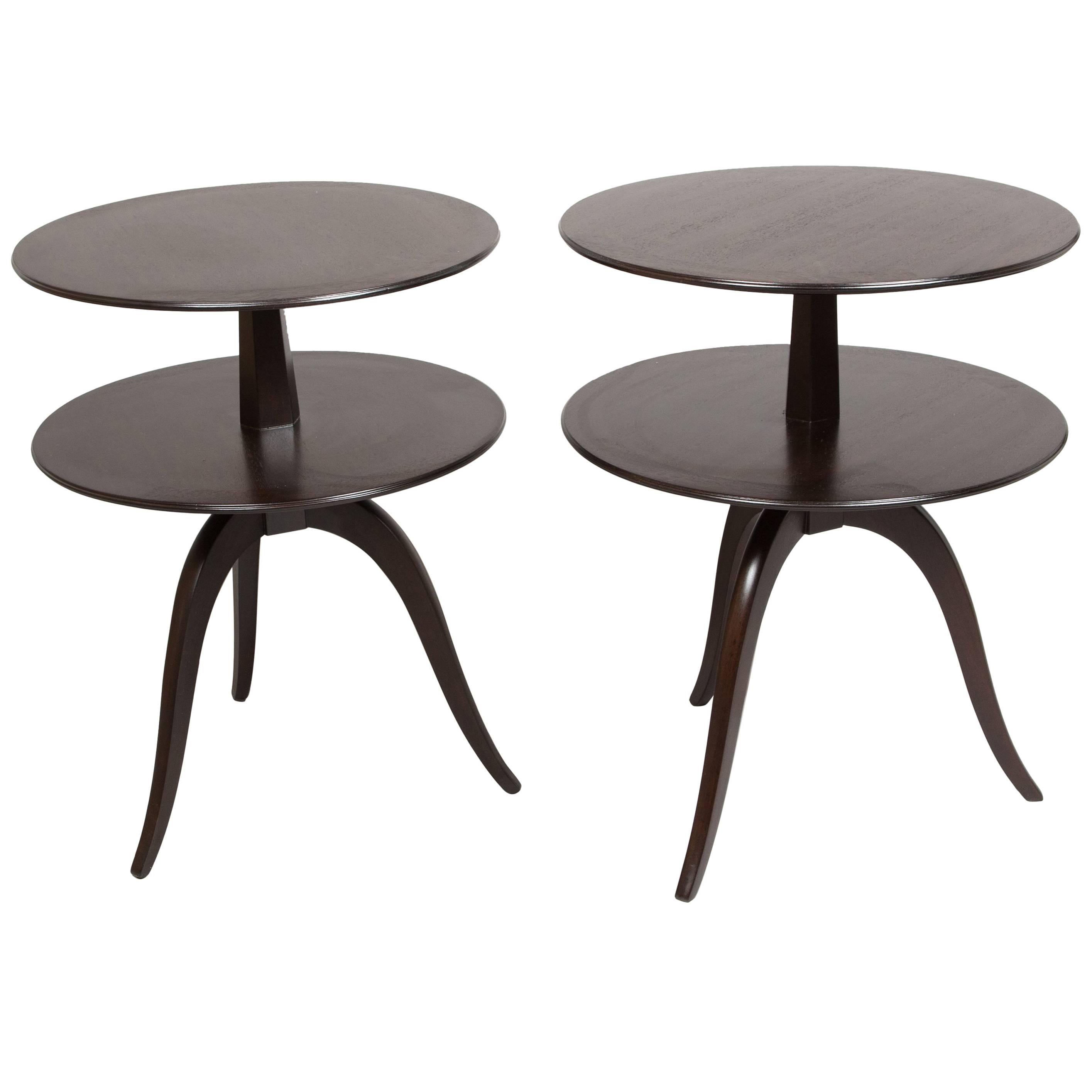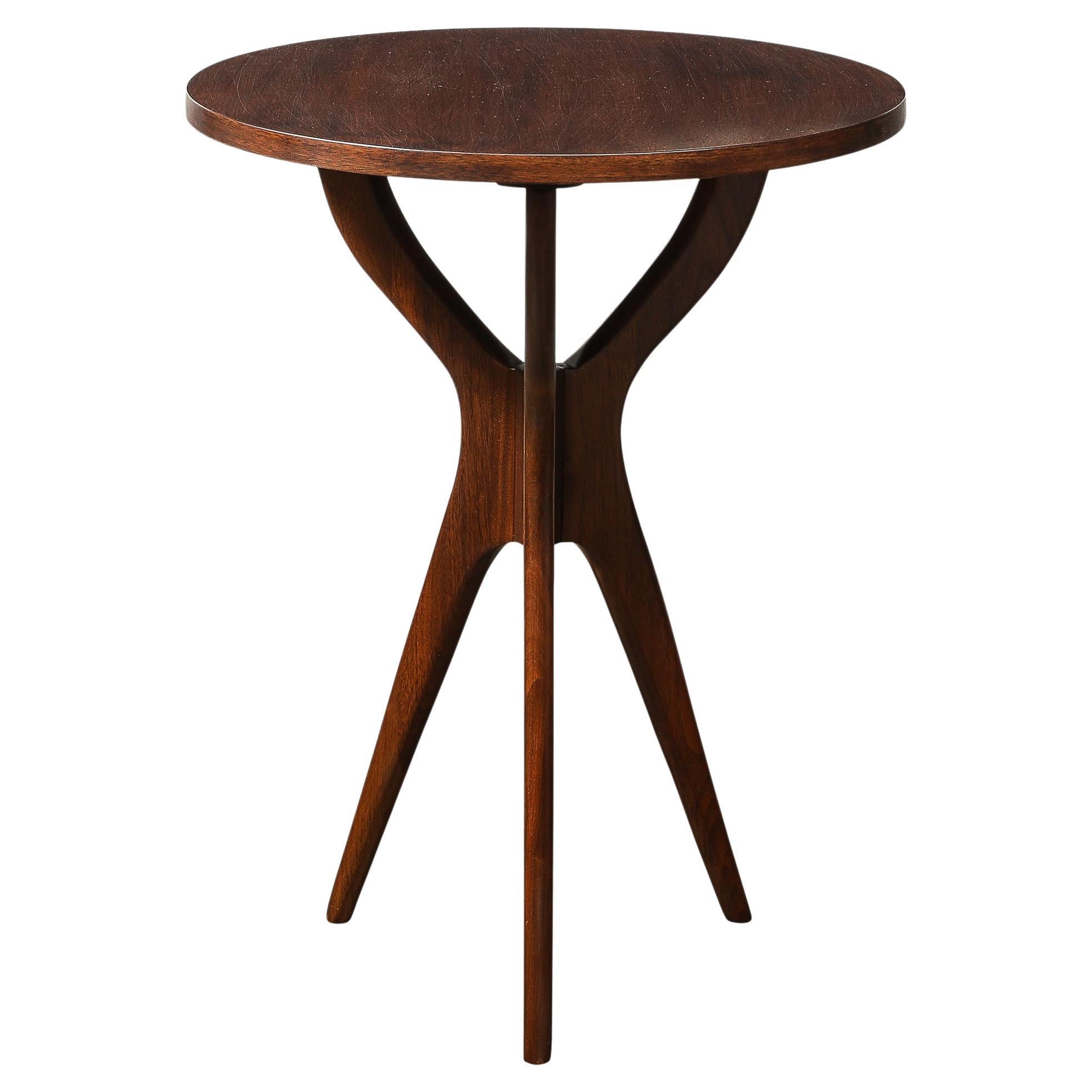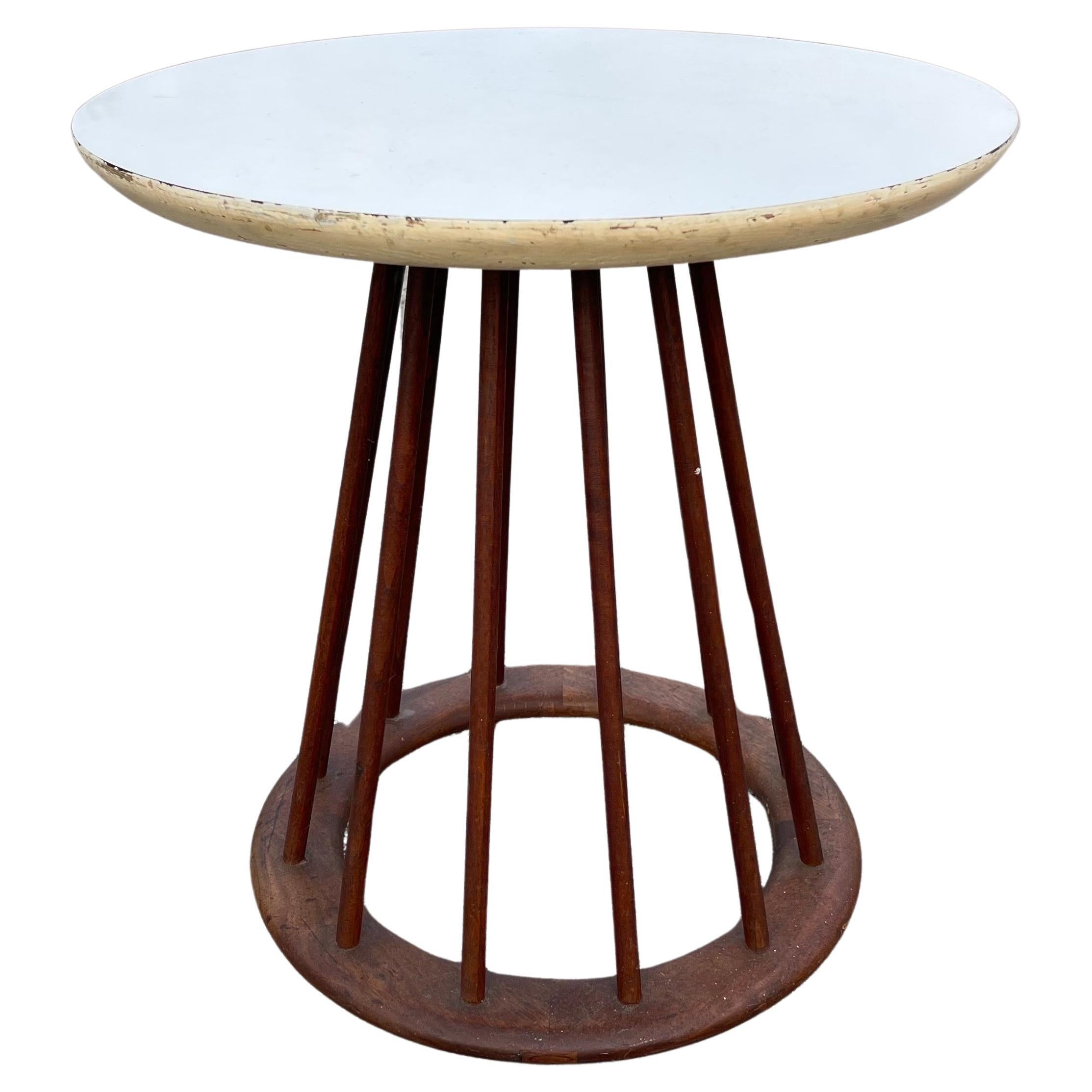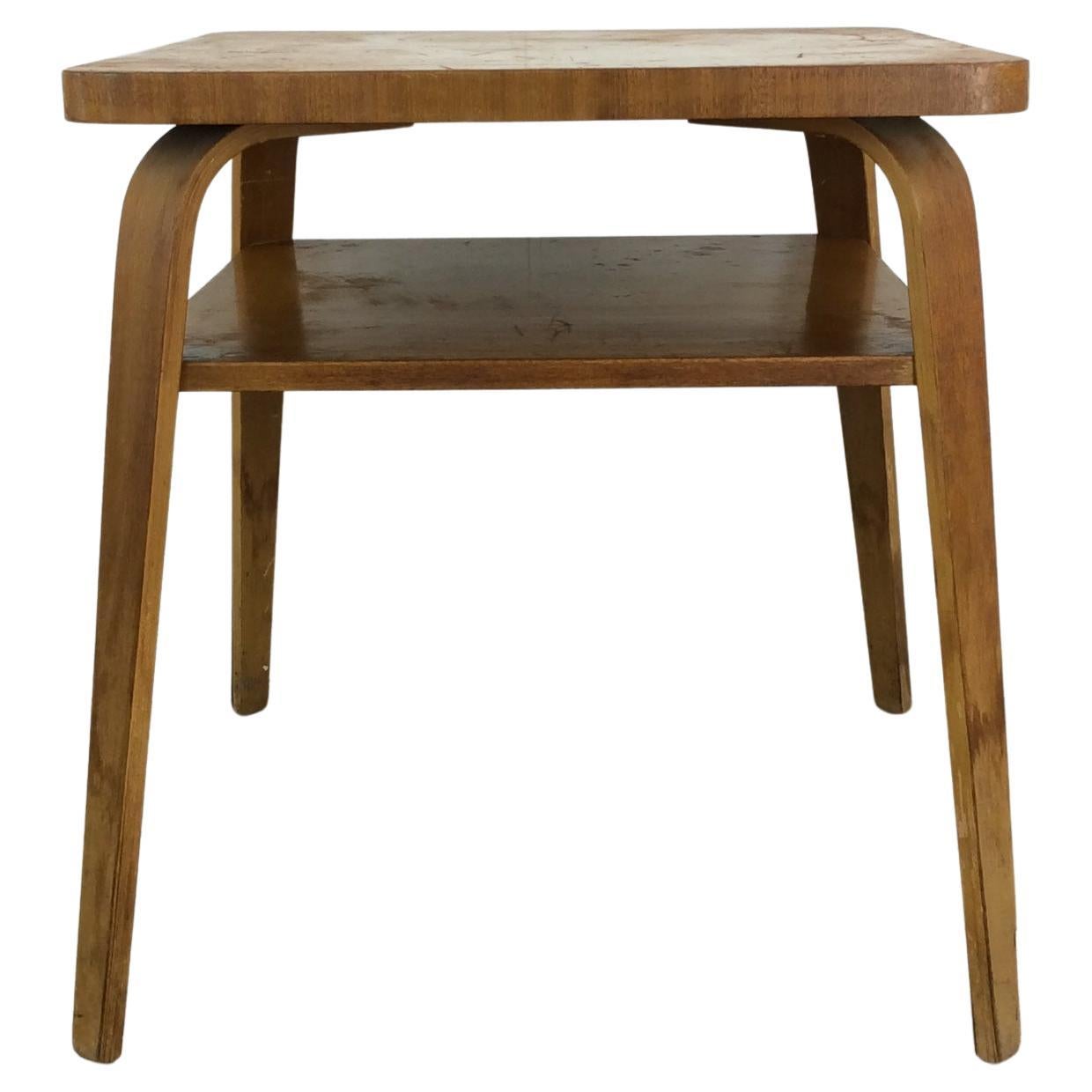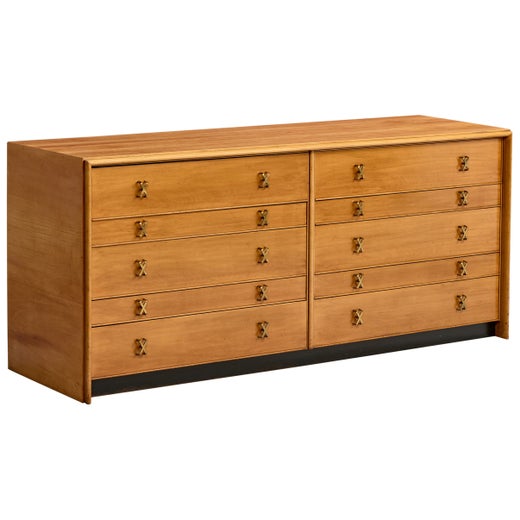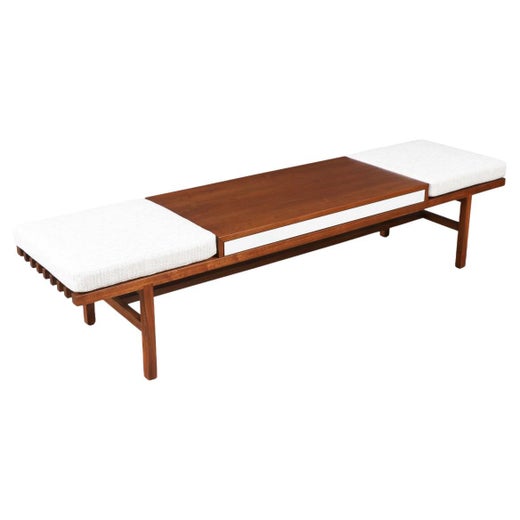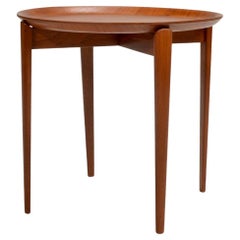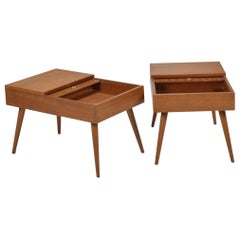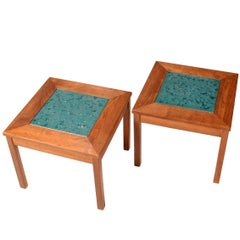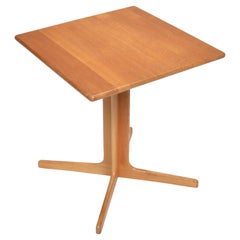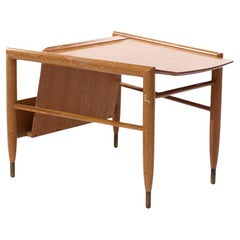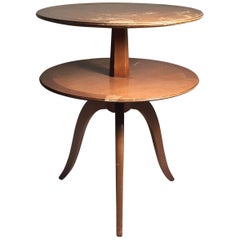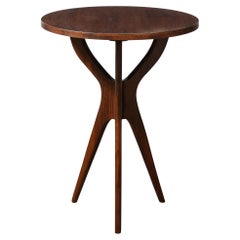Paul Frankl Two-Tier Side Table for Brown Saltman
About the Item
- Creator:Paul Frankl (Designer),Brown Saltman (Manufacturer)
- Dimensions:Height: 28 in (71.12 cm)Diameter: 22.5 in (57.15 cm)
- Style:Mid-Century Modern (Of the Period)
- Materials and Techniques:Maple,Lacquered
- Place of Origin:
- Period:
- Date of Manufacture:circa 1950
- Condition:Wear consistent with age and use. Minor structural damages. Minor fading.
- Seller Location:Los Angeles, CA
- Reference Number:1stDibs: LU1374222830842
Paul Frankl
Born in Vienna, Paul Frankl came to the United States in 1914 as part of a wave of Central European design luminaries — among them Kem Weber, Rudolph Schindler, and Richard Neutra — who were drawn by the energy and optimism of the American scene. Prolific and protean, Frankl would go on to design furnishings that are emblematic of nearly every key stylistic chord in American modernism, from the streamlined Art Deco to free-form organic shapes.
Frankl's Skyscraper cabinets, bookcases and more — introduced in 1924 — are his earliest and best-known designs (and the work by which he is most often represented in institutions, such as New York’s Metropolitan Museum of Art). Tall and narrow, the pieces have staggered shelves meant to mimic the setbacks of Manhattan office towers. A later visually expressive line — the Speed chairs and sofas, which have a raked profile suggesting motion — links Frankl to Donald Deskey, Raymond Loewy and other creators of Streamline Moderne design.
Frankl moved to Los Angeles in 1934 and luxuriated in the climate and lifestyle. His designs became lighter and simpler and found an audience among the Hollywood élite. (Katharine Hepburn, Cary Grant and Fred Astaire were clients.) Fascinated by Asian arts, Frankl produced numerous pieces — tabletops with edges that curve upward; sofas, chairs and other seating with rattan frames — inspired by Chinese and Japanese forms and materials. In the 1940s, Frankl became one of the first designers to incorporate free-form, biomorphic shapes in his work, as well as novel upholstery fabrics such as denim and nubby wool.
Frankl biographer Christopher Long argues that the designer’s easy, elegant aesthetic had an enormous influence on movie set design. As the furniture below attests, Paul Frankl’s work is ready for its close-up.
Find vintage Paul Frankl tables, dining chairs, case pieces and storage cabinets on 1stDibs.
Brown Saltman
The enduring modern design legacy of Brown Saltman was born from the collaboration between designer Paul Frankl and furniture manufacturer David Saltman. Together, they created stunning mid-century modern solid wood furniture with Art Deco influences. Brown Saltman side tables, cocktail tables and credenzas are known for their thoughtful designs and exquisite details.
Frankl was a leading American designer who came to prominence in the 1930s by making rattan furniture for Hollywood stars. However, he dreamed of bringing his designs to the public. That chance came in 1939, when he met Saltman at a party. Saltman was the head of the Los Angeles-based Brown Saltman, which, at the time, specialized in furniture reproductions.
He asked Frankl to create a furniture line, which was released in 1941. It was a hit, with sales exceeding expectations. Frankl quickly started work on a new line for mass production. It featured simplified designs and less expensive materials like combed wood and textured plywood. This line was even more successful, and Frankl started on a third.
In 1942, Frankl and Saltman signed an extended contract to continue their collaboration. However, Saltman died in a traffic accident the next day. World War II also brought Brown Saltman production to a standstill. After the war ended, Frankl decided not to renew his contract.
Brown Saltman partnered with many other designers over the years. A walnut sideboard by Van Keppel-Green for Brown Saltman was featured in the Museum of Modern Art’s 1950-51 Good Design exhibition. Architect and interior designer Paul Laszlo also designed a commercial furniture line for the company in the 1950s.
Brown Saltman dissolved in 1960, but its well-built and beautifully designed furniture remains in high demand today.
On 1stDibs, find vintage Brown Saltman tables, storage cabinets, seating and more.
- ShippingRetrieving quote...Shipping from: Los Angeles, CA
- Return Policy
More From This Seller
View AllVintage 1960s Swedish Mid-Century Modern Tray Tables
Teak
Vintage 1950s American Mid-Century Modern End Tables
Brass
Vintage 1950s American Mid-Century Modern End Tables
Ceramic, Walnut
Vintage 1970s American Modern Side Tables
Oak
20th Century North American Organic Modern Center Tables
Walnut
Vintage 1960s American Mid-Century Modern Coffee and Cocktail Tables
Formica, Walnut
You May Also Like
Vintage 1970s American Mid-Century Modern Side Tables
Wood
Vintage 1950s American Mid-Century Modern Tables
Wood
Mid-20th Century American Mid-Century Modern Side Tables
Wood
Vintage 1960s American Mid-Century Modern Side Tables
Walnut
Vintage 1960s Mid-Century Modern Side Tables
Laminate, Walnut
Mid-20th Century American Mid-Century Modern End Tables
Maple, Bentwood
